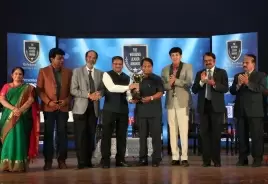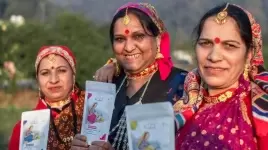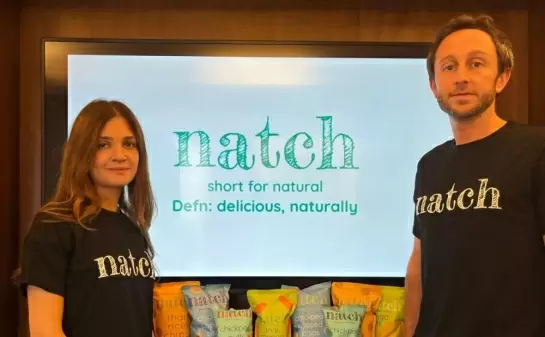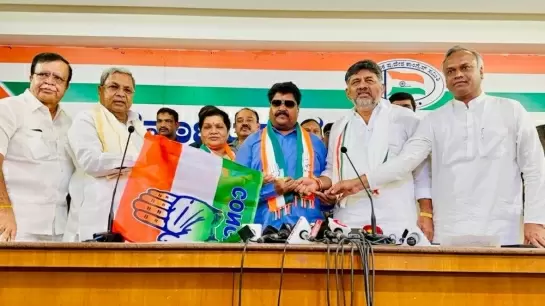The rise of a parallel Aravallis
03-December-2011
Vol 2 | Issue 48
If you’ve been to southern Rajasthan during or before the 1980s and plan to go again now, you will find yourself in an altogether different terrain.
And if, back then, you happened to take a spiritual bath in the Gomati river, known as the ‘Ganga of southern Rajasthan’, you should count yourself lucky for being among the last few to take a dip in this dying river.
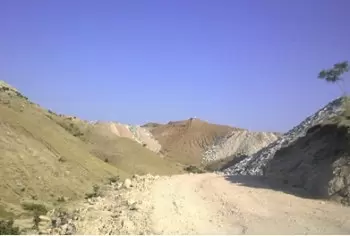 |
|
In the last two decades, the landscape of southern Rajasthan has completely altered.
|
In the two decades, the landscape of southern Rajasthan has completely altered. Streams and rivers that were the lifeline of the hills for centuries have ceased to exist. The hills stand naked; the panoply which once adorned them is quickly disappearing.
In their place: a new manmade range of marble overburden and slurry. Google Earth and other satellite images confirm the change. The Aravallis is turning into a monotonous white range as if it has got a new marble floor that is yet to be polished!
Rajasthan boasts almost two-thirds of India’s mineable marble reserves; it is responsible for around 85% of the country’s total marble production. Indeed, the entire stretch of the Aravallis in lower Rajasthan is a vast depository of marble. Rajasamand, Udaipur and Banswara districts contribute over half the state’s marble output.
The last two decades have seen demand for Rajasamand marble soar to incredible heights. In fact, Makrana marble which shines in the Taj Mahal is now considered flat compared to Rajasamand marble.
Demand for this white-and-green mineral has been at the expense of the Aravallis ecosystem. Until 1985, the hills were covered in dense green forests. In the two decades since, the number of marble mines multiplied rapidly. Till 1980 there were only nine mines in southern Rajasthan; today more than 1,500 mines operate in the region.
Although the marble industry provides employment to thousands of people, and contributes substantially to the economy of the state, no attempts have been made to evaluate and table the social and environmental costs of marble mining. The death of the Gomati is just one example of how mammoth the ecological cost can be.
It has come about through careless and unplanned marble mining in the river’s catchment and the blocking of rivulets through the dumping of marble overburden and slurry. The river has been reduced to a narrow, seasonal stream that comes alive only during the monsoon.
The Gomati is not the only victim. The Banas river too has lost its way in southern Rajasthan, and wetlands that used to be breeding or resting grounds for migratory birds from Saharan and sub-Saharan regions are now covered in huge mounds of marble waste.
Kumbhalgarh Wildlife Sanctuary in Rajasamand has been the most seriously affected by mining activity; use of heavy machinery, transportation, and pollutants have had disastrous effects on the sanctuary’s wildlife.
In 1988-89, a researcher from the Honduras visited the forests of the Aravallis in Udaipur region and recorded that the climax species were teak (Tectona grandis) and bamboo (Dendocalmus strictus). Today, bamboo has been reduced to a domestic plant species and teak has almost vanished from the area.
Marble mining is opencast mining, which means the topsoil and vegetation have to be removed in order for the area to be mined. This process generates huge waste. Gang-saw units, which cut marble blocks into slabs, also generate a lot of waste and slurry apart from utilising vast quantities of water.
A single gang-saw unit consumes 43,000 litres of water per hour. Together, the 340-odd such units in this part of Rajasthan consume almost 117 million litres of water a day -- enough for the daily needs of half the population of Pune! Water levels in Rajasamand district have gone down by eight metres in just 10 years.
To add to this, marble mine owners often ignore the permissible limits of size, time, and depth of mines. A mine lease is issued for a certain period and for a specific size and depth.
Most mines flout these limits. According to the rules, at least one-third of every mine must be under tree cover; none of the mines in and around the Aravallis adheres to this.
Then there are rules and procedures for the dumping of marble waste and slurry. This too is largely ignored by both the business community and the authorities. Dumping waste on pastureland, hillsides and on the banks of rivers and waterbodies has caused ecological disturbances, especially to the region’s hydrological system.
The drop in agricultural productivity is just one of the consequences of this. Marble mining and processing generates huge amounts of dust and particles, negatively affecting soil morphology in nearby areas. Dust accumulates on standing crop or on fertile soil leading to changes in the soil structure and a decrease in yields. Its impact on microbial activity is harder to quantify.
At Rishabdeo or Nathdwara, or any other religious destination in the vicinity, you are greeted by huge marble mounds on either side of the road emphasising the fact that you have entered a (w)holy white world! In many instances, the marble mounds are higher and bigger than the hillocks of the Aravallis!
It is indeed a parallel Aravallis in the making -- an Aravallis of human desire. Artificial ponds of marble slurry lie scattered along National Highway 8, close to both the Rishabdeo-Obri and Rajanagar-Kelwa mining belts. In the monsoon, the slurry is carried away to rivers, drains and waterbodies, affecting water quality, reducing storage capacity and destroying aquatic life.
Taking note of the situation, and prompted by a PIL by a local NGO and other environmental organisations, the Supreme Court ordered a complete ban on marble mining in 2002, over the whole of Rajasthan. The ban did not last long; lobbying and affidavits by the state government, lobbying by the media for development activity, fear of unemployment, and changes in policy and permission regimes all ensured that it was lifted a mere two months later.
Last year, the Rajasthan High Court ordered the closure of 474 marble mines in Makrana that were found to be flouting the rules with impunity. No action has been taken on mines in the southern part of Rajasthan whose owners are in a hurry to extract as much as they can before the court wakes up or the department realises that the time to take appropriate action has come.
Studies have shown that marble mine workers are exposed to numerous health risks. Though many mines post notices stating proudly that all legal and procedural requirements for work in the mines have been met, this is far from the truth.
The marble industry generates less than 2% of Rajasthan’s total revenue, but its negative impacts are far-reaching and irreversible. Indeed, the financial returns from mining are low compared to the future cost in terms of loss of natural resources, decreasing agricultural productivity, loss of soil and vegetation cover, disturbance to the hydrological system, loss of wetlands and decreasing catchment area, and slow death of rivers and waterbodies. That’s apart from the expenditure on health arising out of mining and subsidiary activities.
Researchers and environmental organisations have long been warning the state government about the increasing threat of desertification. The situation is so bad that in many parts there is no pastureland for cattle to graze and no productive farmland to plough.
The tribals of Obri village in Udaipur district, for example, now have no common pastures left for their cattle or farmland to grow food. The entire area is an intense marble mining zone. Fifty-five-year-old Hukma Bhai from Obri says: “Tees saal pahle hamne mines ka swagat kiya lekin ab hum apne jungle or zamin sab kho chuke he. Jo kuchh bacha he wo kisi kam ka nahi he.” (“Thirty years ago we welcomed the mines but now we have lost our forests and our land. Whatever is left is useless.”
(Bhomik Shah works with WWF-India as senior programme coordinator.) Infochange News & Features




